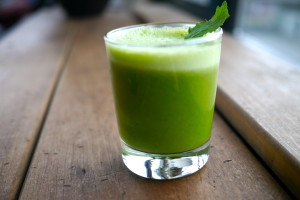Recipe of the month: OCTOBER
(Vegan, Vegetarian, Paleo, Gluten-Free, Dairy-Free)
The book ‘Is Food Making You Sick?’ contains more than 150 strictly low histamine, low histidine, low oxalate and antihistamine recipes.
In one of our blog posts we highlighted the diamine oxidase properties of dark-grown pea sprouts. Here are some ways to use those DAO-packed sprouts in delicious raw smoothies.
Sweet Mango and Pea Smoothie
Ingredients:
2/3 cup sprouted green peas
2 cups iceberg lettuce
1 cup frozen mango chunks
3/4 cup organic apple juice
1/4 cup filtered water (or tap water)
1 tablespoon milled chia seed
If you wish you can sweeten with honey, maple syrup or sweetener of your choice.
Instructions:
Put all ingredients together your blender and blend at highest speed until the mixture is smooth.
– – – – – – – – – – – – – – – – – – – – – – – – –
Anti-inflammatory Power Juice with Quercetin and DAO
Ingredients:
1/2 cup of freshly dark-sprouted pea seedlings
1 small head of fresh broccoli
1 unpeeled apple, core removed
1 small knob of turmeric root
Directions:
Place all ingredients into a blender and blend until smooth. Drink as soon as possible.
– – – – – – – – – – – – – – – – – – – – – – – – –
Easy Sprout Juice with Apple and Ginger
Ingredients:
- 1/2 cup dark-sprouted pea seedlings
- 1 unpeeled apple, core removed
- a small piece of ginger
Directions:
Place all ingredients into a blender and blend until smooth. Drink as soon as possible.
– – – – – – – – – – – – – – – – – – – – – – – – –
Beetroot Juice with Pea Sprouts
Ingredients:
half a medium-sized beetroot
3 celery stalks
1 unpeeled green apple, core removed
2 carrots
big handful of cilantro/coriander (with stems)
1/2 teaspoon amchoor powder
freshly ground black pepper to taste
Directions:
Place all ingredients into a blender and blend until smooth. Drink as soon as possible.


 Don’t panic about gluten!
Don’t panic about gluten!
 Antihistamines
Antihistamines Pea Sprouts to boost your DAO
Pea Sprouts to boost your DAO